ron-t kayaking blog
30 August 2013 .............. Puffin Island
I had my first trip out to Puffin Island - it was planned to be a short trip, because I had other things to do down at that end Anglesey when I was there.
However it didn`t turn out that way - my tidal planning was fine, but the wind became a major problem, and it all turned into a bit of an challenge.
I launched from Trwyn y Penrhyn - there are some handy places to launch from along that bit of road - it was fairly close to low tide, and paddled out into some of the rougher stuff to see how the boat would behave. It was the first time I`ve been anywhere with it apart from the Swellies since I did the latest changes to the bow.
It seemed to behave fine, so I set off along the coast towards Penmon, after a short paddle you come to the first bit of history along that bit of the coast - I think it is the remains of an old quarry. I think I`m right in saying that Penmon limestone was used in the building of the two bridges across the Menai Straight, as well as several other places. There`s another old quarry round the corner from Penmon as well.
So here`s the quarry buildings along by Penmon Point - or Trwyn Penmon.
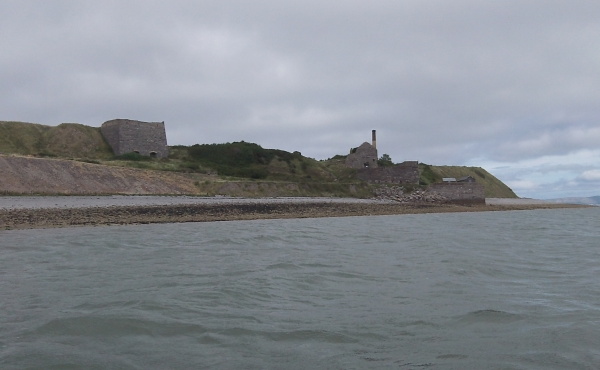
Not long after that you come to Trwyn Du, the most easterly point of Anglesey, with its lighthouse, Perch Rock, Puffin Sound and Puffin Island.
Here they all are, starting with the two houses that I guess were lived in by the lighthouse keepers. I think they are now used for holiday rentals. They are rather impressive houses.
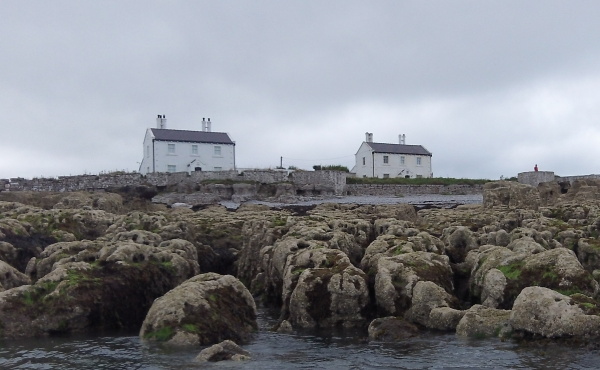
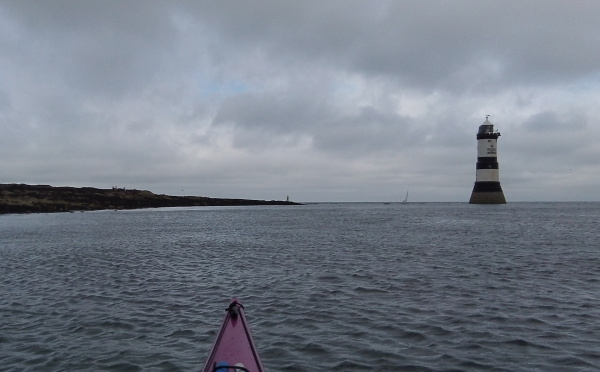
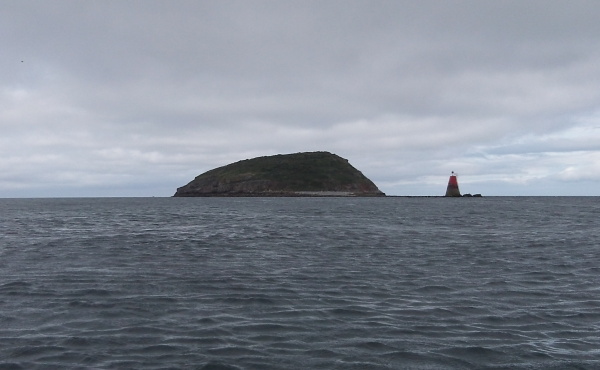
All the way along the coast the wind had been somewhat behind me, with a bit of south in it. At times there were some quite pronounced waves, and I found that if I paddled hard and accelerated just as a wave came up behind me, then I could catch the wave, and surf it - I got some quite good runs that way.
I don`t think I`ve ever been able to do that before - at least one of my previous boats was awful in a following sea, it just wallowed as the wave passed underneath it.
So that`s good news that my modified Isel behaves like that.
I reckoned that the north side of Puffin Island would be sheltered from the wind, so headed out across Puffin Sound towards Perch Rock, and the long tail of rocks that stick out from that end of Puffin Island. The plan was to head out along the south side of Puffin Island with the wind behind me, and return along the north side out of the wind.
I didn`t hang about, as the flood tide had now started flowing through Puffin Sound, and about 200 metres out into the open water I could see a rather evil looking tide rip.
Over the other side of Puffin Sound, the wind was very strong, and it was quite hard to get round the tail of rocks against the wind and so get to the south side of the island.
I picked up a few more waves whilst heading out along the side of the island, but no pictures, I was more interested in staying in my boat.
At the far end of Puffin Island, at low tide there is another long tail of rocks, and they were covered in seals - loads of them. I didn`t want to risk disturbing them and having a mass exodus, so I had to give them a wide berth.
Eventually, once quite far round, the sea was a bit calmer, so I was able to grab a picture - you can just make out some of the seals on the rocks.
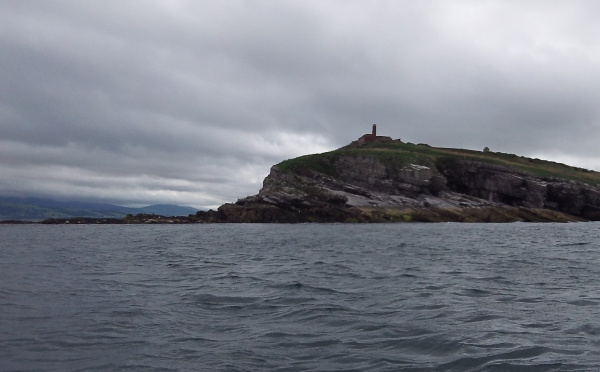
At first there was a bit of shelter, and I took some pictures of the rather strange rock formations along that bit of the islands coastline - big squarish chunks of rock.
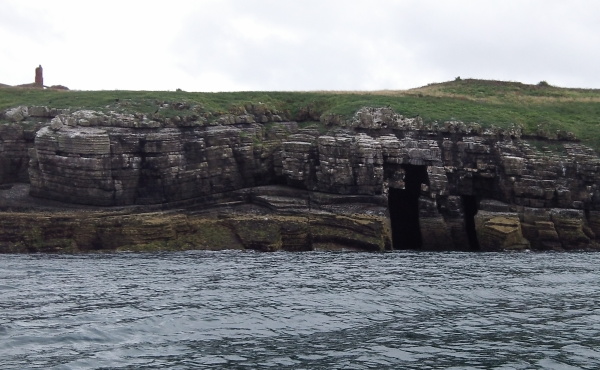
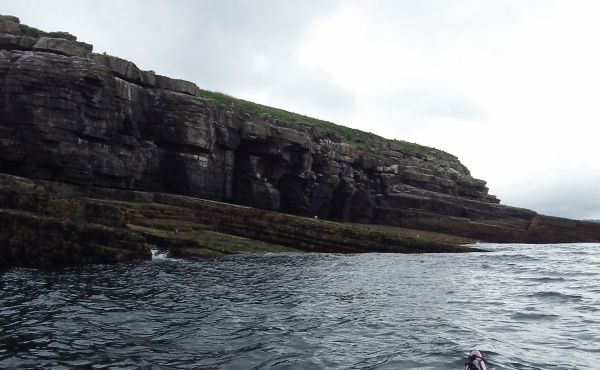
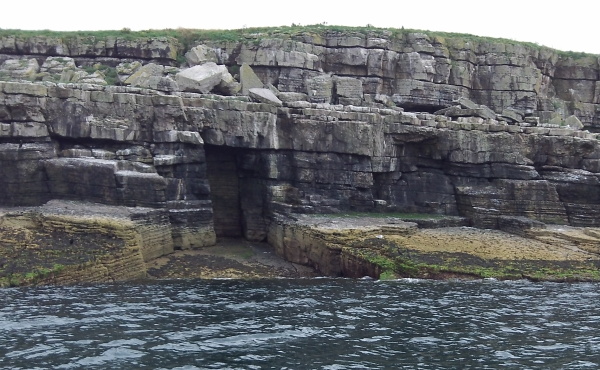
After that, things went decidely downhill - I knew that there would by now be a stronger flood tide through Puffin Sound, which would try and wash me out to the evil looking tide rip, so reckoned I had better aim high, and head over to say Trwyn Dinmor. So I was paddling diagonally against the tidal flow.
That would have been okay, except that the wind was now hitting me almost straight on, and it was whipping up quite a chunky sea.
I made incredibly slow progress, and it took a very long time to get back over.
I don`t know what the normal Isel is like in these sort of conditions, but my modified version tended to pitch a bit, and to slap down onto the oncoming waves. I think this is a fairly normal and predictible result of having a bow somewhat oriented towards surfing.
Again, I don`t have a lot of experience of other boats in this kind of sea, but I do recall one trip in another boat in a much smaller sea, that on every wave, the bow rode up onto the wave and the boat stopped dead. It wasn`t a boat designed for surfing, it couldn`t surf tor toffee, it was just a normal sea kayak. So my Isel is certainly better than that.
It`s an interesting aspect of boat design - if you add volume to the bow to stop it pearling when surfing down wind, then it is more likely to pitch and slap when heading into the wind, rather than slicing through the waves.
It was definitely time for a tea break when I eventually got over to the mainland, and stopped on a somewhat stoney but quite pleasant beach. The sun came out, so I fell asleep in the sun for a while.
I climbed up onto the rocks and took a couple of pictures looking down towards Penmon - looks idyllic doesn`t it !
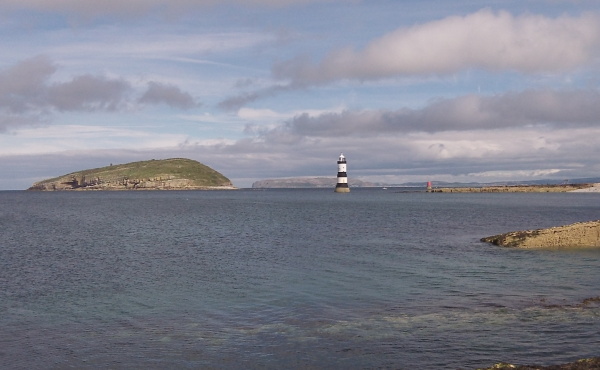
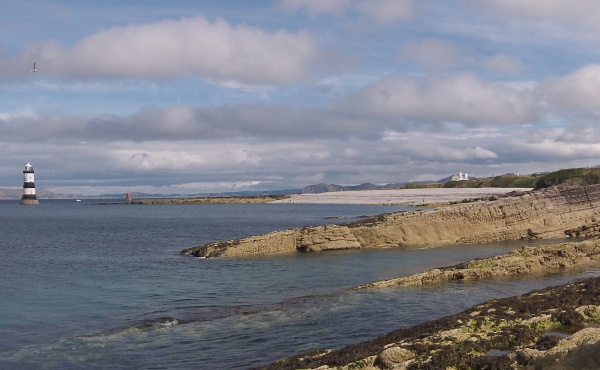
The sun didn`t last long though, it quickly clouded over with thick dark cloud. As I headed off, this was the view looking up the coast to the west.
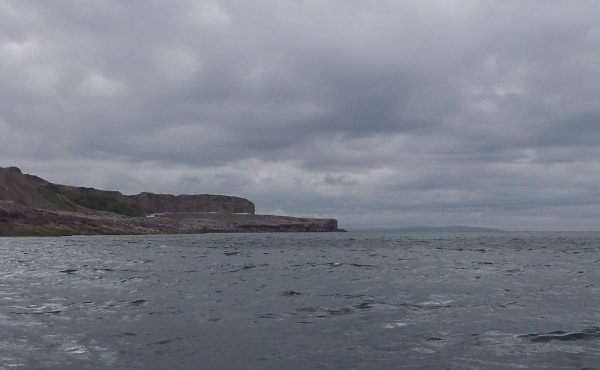
It is quite hard to tell what is natural and what is man made, because there is or was a huge quarry just behind Trwyn Dinmor. But here are a couple of views of what I think are natural features of that area.

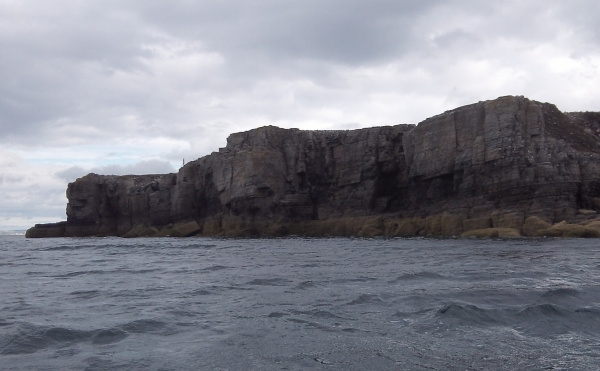
Looking down towards Penmon - there was some change in the weather !
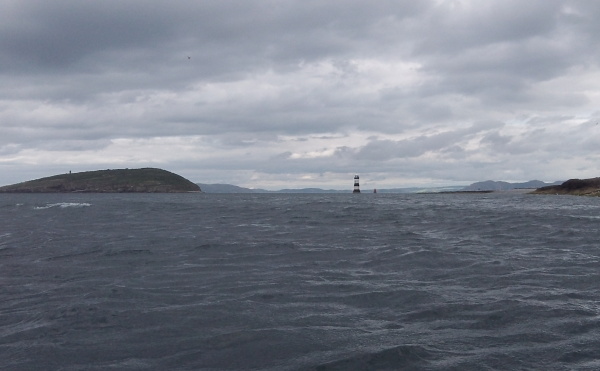
The journey back from Penmon to my launch site was a total nightmare against the wind - at times I was paddling as hard as I could, and I was literally going nowhere. It took forever.
I was very glad I hadn`t started out from somewhere like Beaumaris.
It does appear that the wind doesn`t play fair. When I was crossing back over to the mainland from Puffin Island, the wind was from the west and north west. But heading back down the Strait, it was from the south west.
Despite all the challenges of the day, I`m quite pleased that I haven`t turned the Isel into a monster in these sort of conditions, it behaved very well the whole time, except for the pitching and slapping heading into the quite chunky sea.
It doesn`t really exhibit either of the characteristics of lee-cocking or wind-cocking, it seems to be fairly neutral.
There is a well documented view that smaller lower volume boats like my modified Isel are much easier to handle in windy and rough conditions than larger more "normal" or "typical" British style sea kayaks.
There is less side-on windage for a start. There is less surface area at the ends of the boat for waves to push the boat around to the side compared to a boat with an artificially extended keel-line that are usually a feature of more normal sea kayaks - these are used to make the boat track better - the downside is that they make the boat harder to manouvre, and give waves extra leverage to push the boat around.
So you could argue that because they are easier to handle, they are safer.
My experiences on both this trip and on previous ones mean that I very much agree with this view.
My modified Isel does have one annoying characteristic though - whatever it is I`m trying to photograph, when I put down my paddle and take out my camera, I can guarantee that the boat will turn itself round and face the opposite way !